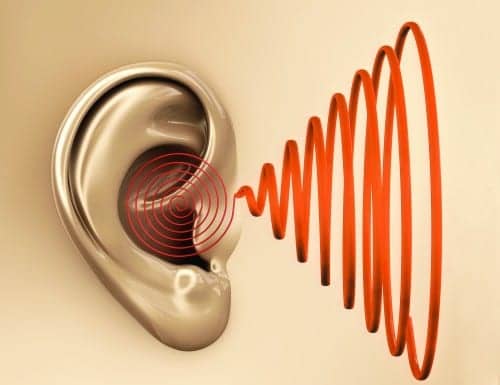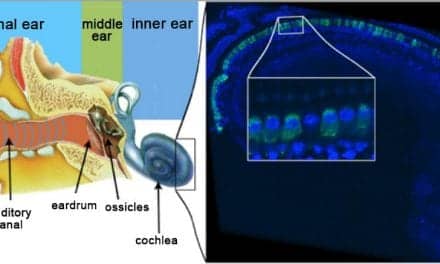An international research study has led to a breakthrough that gives new insight into how tinnitus, and the often co-occurring hyperacusis, might develop. In a study article to be published in a forthcoming edition of eLife, researchers from the University at Buffalo in New York, Southeast University in China, and Dalhousie University in Nova Scotia, suggest that the neural network responsible for tinnitus and hyperacusis is more expansive than previously thought. Their findings could lead to a testable model that helps to identify what region or regions of the brain might be responsible for causing the two conditions.
According to an announcement from University at Buffalo (UB), now that the researchers have conceptualized a broader and more comprehensive neural network involved in these conditions, they hope to test the model by deactivating specific segments of the neural network. Through a process of elimination they would learn if shutting down one part of that network relieves tinnitus, hyperacusis, or both conditions.
Previous studies showed that tinnitus symptoms could persist even if a patient was deaf, which indicated brain and neural involvement.
“This changed the thinking in the field,” said Richard J. Salvi, PhD, director of UB’s Center for Hearing and Deafness, and one of the study’s authors. “Having severed the neural connection between the ear and the brain, it’s impossible for the phantom sound to be generated in the ear. It has to be generated in the brain.”
As described in their research article, tinnitus is not a disease, but a symptom that is characterized by phantom sounds—patients experience ringing, buzzing or other sounds in their ears—in the absence of actual sounds. The authors describe hyperacusis as a condition that causes sounds to be perceived as intolerably loud. Existing treatments for these two conditions are considered to be unreliable, either not working at all or varying greatly in efficacy.
Though it’s not known yet exactly where and how tinnitus occurs in the brain, Salvi reports that the research team’s functional MRI studies show the abnormal activity underlying tinnitus and hyperacusis isn’t confined to a specific brain location, but actually involves a neural network. Unlike traditional MRIs, which show only structure, functional MRIs show what parts of the structure are active at a given time, while functional connectivity MRI reveals how one part of the brain interacts with other regions.
The researchers reportedly induced tinnitus in rats by administering the active ingredient in aspirin, which has long been known to produce tinnitus and hyperacusis symptoms in humans.
“Certain brain regions become very active once tinnitus is induced, much more so than it is for an animal with normal hearing,” Salvi said via the UB announcement. “Even though high-dose aspirin induces a hearing loss and less information is being sent from the ear to the brain as a result, the brain responds with greater activity. It’s paradoxical, like a car getting better gas mileage with a less efficient engine.”
According to their article, the researchers traced the network’s course and identified a major hub within the central auditory pathway, the sound processing center of the brain.
“Other research has shown this activity, but what is novel about the current study is the amygdala pops up,” said Salvi. “This is the part of the brain that assigns emotion to our perceptions. Many patients report the onset of tinnitus after experiencing significant stress or anxiety. We think it’s not just the hearing loss that’s essential. There are other emotional factors working together with the auditory factors.”
The study authors report that the reticular formation, the center involved in the “fight or flight” response, is active too. Also active is the hippocampus, the memory region of the brain that helps identify where things are located. The researchers say that the auditory system is connecting sound to a location—in this case, the ear—along with emotion. The investigative team was surprised to discover that the cerebellum is also active, a center normally activated during motor planning events like catching a ball.
Salvi reports that the cerebellum might act as a “gate” that allows the phantom sound to enter the consciousness.
Other research conducted by Richard J. Salvi and colleagues was described in a March 23, 2015 articles in The Hearing Review.
Source: University at Buffalo
Photo credit: University at Buffalo; Dreamstime






